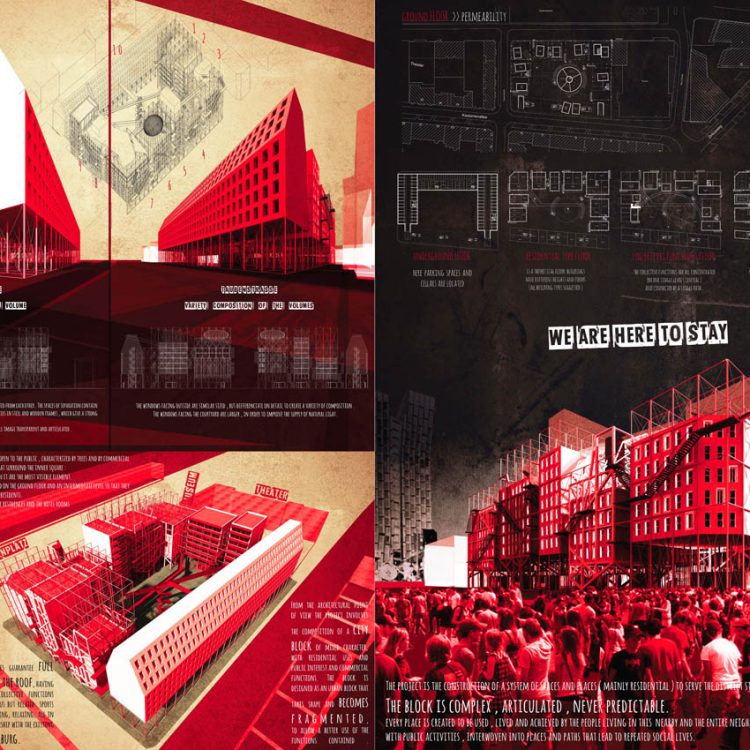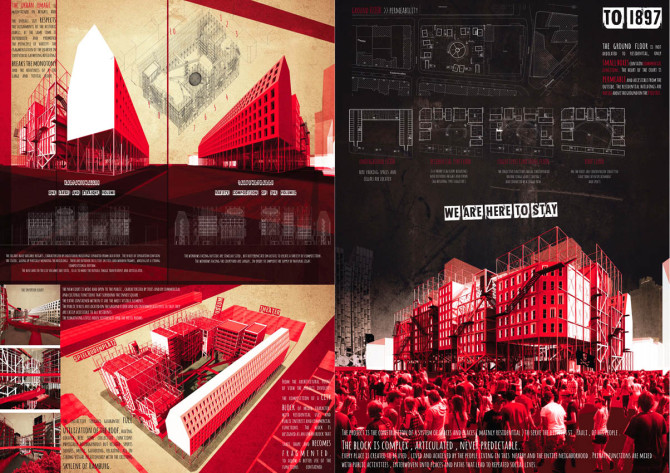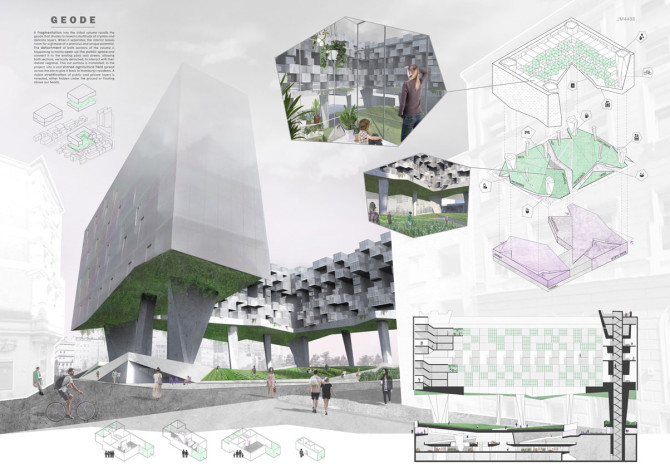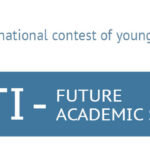Ctrl+Space hosted this Ideas Competition with the aim of identifying the best proposal of a Mixed-use building located in Hamburg, Germany.
This Competition departed from the premise that a mixed-use building could provide answers to the issues of densification of the urban centre with use of the Residential function, deeply entwined with public presence and activities.
There arose the reflection upon the theme of the Hybrid building, a typology that comes as a reaction against the functional segregation fostered by the Athens Charter, whose effects are widely known and felt in our daily lives in most of our cities. Theorized by Joseph Fenton and Steven Holl, its built examples express deep relations to the city; the dynamics and flows of public; the all-day-round uses; reflection of the individual within the collective; experimentation on new dwelling models; beyond the borders of a typical residential / mixed-use building.
Moreover, a Hybrid building tests the limitations of Architecture and introduces questions from the field of Urbanism. All these aspects were fostered by this Competition. Bringing the discussion of this theme to an Intervention Site with a rich and long backstory has effectively provided a hard challenge and a wide variety of paths to reach a final solution.
Being clearly an architectural response to all recent history of the location and the city, the different elements that constitute the whole complex are reactive of the urban surroundings, whether in scale or configuration. The hybridity of the building comes from all the bridges established with the city fabric, either concrete or metaphorical; the building is open and accessible to the generality of public in all its public spaces. Structure takes here an important presence, the exoskeleton enforces the unfinished quality of the space, apart from introducing a strong graphical appeal.
Harnessing the qualities of its environment and gathering the essential ingredients of the city, this project constitutes a city within the city, permeable to the outside, providing a framework to urban activities, place making as a process and a underlining philosophy.
An airy project, an elegant and innovative reflection on how to increase density in the city centre.
Inside the Residential modules the agricultural production theme is still present, all units have protruding greenhouses that apart from functional are able to introduce a phenomenological aspect with their shines and reflections. An interesting take on economic and ecological sustainability of food production and its integration in the architecture of the place.










![NE[O]ASIS](https://competitions.archi/wp-content/uploads/2021/08/neoasis-150x150.jpg)
